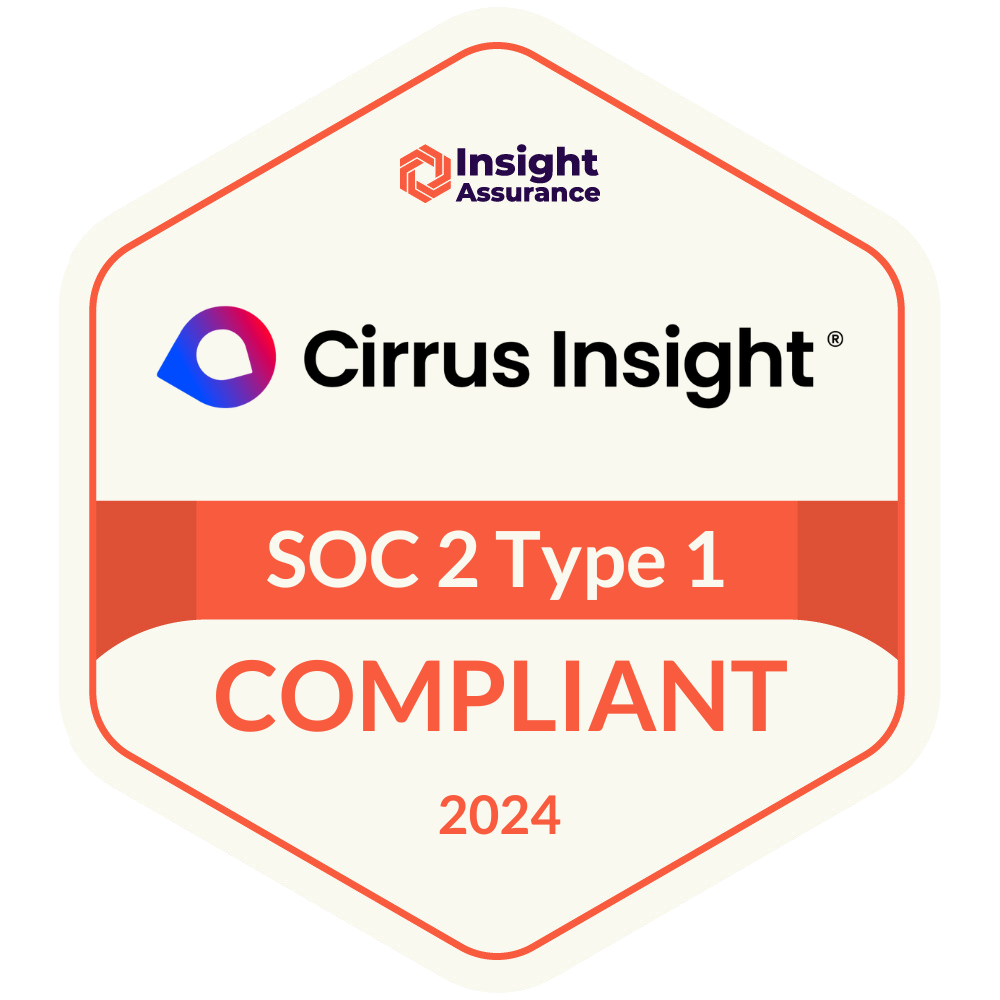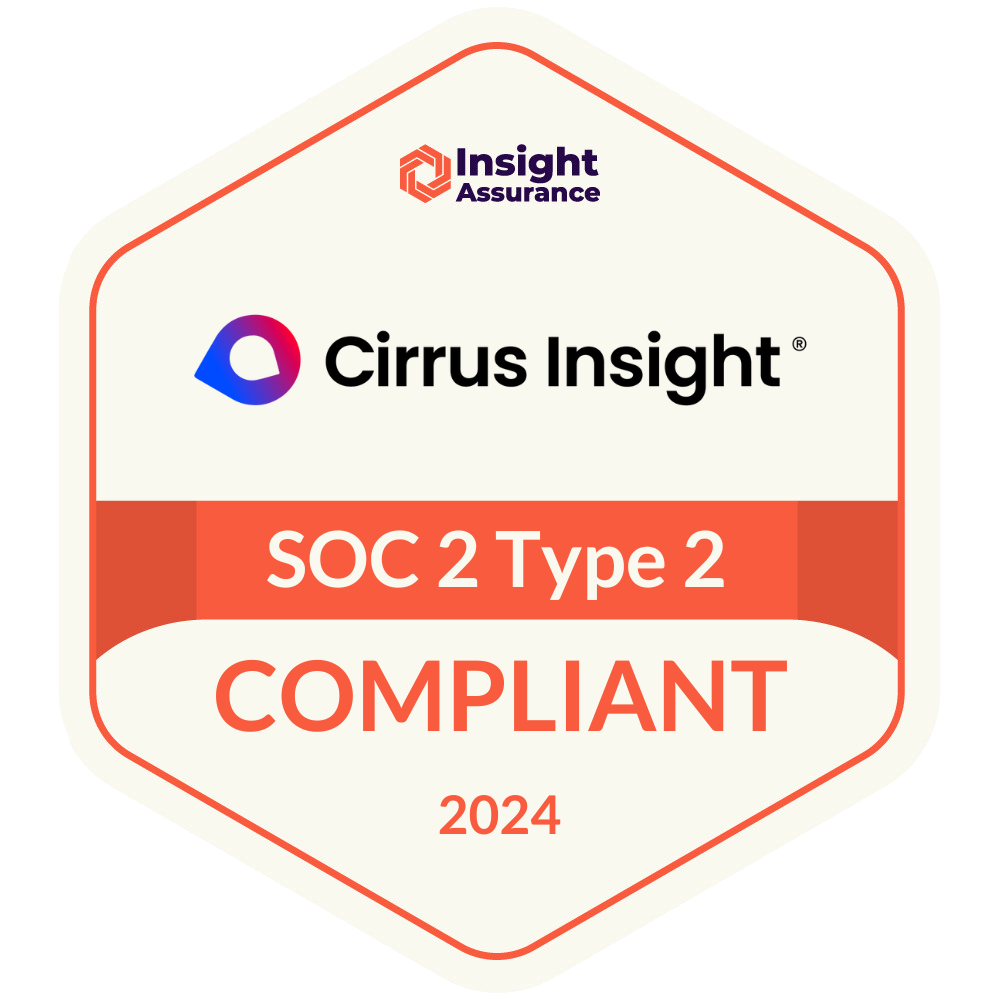- Solutions
-
Products
-
Resources
Sales Automation Tools | Cirrus Insight by Kristi Campbell View all Blog Posts >Get the App, Get the Sidebar, & Get Your Trial Going HereUnleash limitless growth opportunities by partnering with Cirrus Insight.
- Pricing
Filter By:
- All topics
- Sales Productivity
- Sales Intelligence
- Salesforce
- Sales Strategy
- Sales Prospecting
- Book More Meetings
- Best of
- Company News
- Product
- Sales Leadership
- CRM Admininstration
- Sales Metrics
- Supercharge Sales Activity
- Team Scheduling
- Admin
- serious insights
- Prospect Smarter
- Sales Activity Data
- Sales Forecasting
- Scheduling Solutions
- Prospect Faster
- Auto-Sync Everything To Your CRM
- Chrome
- Comparison
- Financial Services
- For Admins
- Getting Started
- IT & Security
- outlook
Subscribe to our Blog for the Latest Insights
Join our blog community to stay informed and receive fresh content and actionable tips directly in your inbox.
9 Ways Sales Data Analysis Can Help You Generate More Revenue
Sales data analysis is a vital way for organizations to maximize their sales capacity, and meet customer needs, in an increasingly competitive world.
Long gone are the days when organizations could succeed by relying on guesswork and intuition to manage sales. The tools for gaining meaningful insights from large amounts of data are now affordable and easily-accessible to every organization. The playing field has been leveled.
As more and more companies gain the ability to make precise, data-driven sales management decisions, the margin of error is becoming smaller and smaller. Relying on guesswork leaves you open to being disrupted by more data-savvy competitors and startup companies, regardless of what industry you’re in.
Fortunately, a well-designed sales analytics program can deliver drastic increases in revenue and profit margins by enabling your organization to make better decisions.

Here are the top 9 ways sales data analysis can help your organization generate more revenue and outmaneuver the competition:
1. Improve Value Propositions and Price Points
By becoming data-driven, you can ensure that you are always saying the right thing, to the right customer, at the right time.
Most organizations find it extremely challenging to develop value propositions that are effective at convincing each segment of customers they target in their marketing and sales activities. While most companies opt for a one-size-fits-all approach, data-driven companies are able to test many different value propositions on different segments of customers to identify which are the most effective.
By collecting and cross-referencing many data points, it’s possible to build highly-personalized value propositions tailored to the specific needs of each customer segment.
Another challenge is setting the price of new products and services to ensure maximum sales and revenue. Using market data and dynamic-pricing engines, companies can test many different price points to determine what the optimal price is for each solution, and even for each segment of customers.
Some companies have discovered that, in order to maximize revenue, they actually needed to raise prices. While price increases may cut the number of potential sales, by growing the average size of each sale, you may be able to achieve an increase in overall revenue.
2. Narrow and Refine Product Offerings
Sales data provides many valuable insights that your organization can use to cut costs and improve your product offerings.
By analyzing transactions, you can spot products whose sales are under-performing overall, or under-performing in certain customer segments. Then, you can investigate why they are under-performing, and use the feedback from customers to refine products to better meet their needs.
In addition, you might determine that some products are no longer worth producing or supporting. By cutting these under-performing products, you can decrease costs, and focus more time and resources on products that drive the most revenue and profits.
3. Disruption and Innovation
In order to remain competitive, you must be able to quickly adapt to changing marketing conditions, trends, and customer demands. In such a dynamic, fast-moving business environment, a well-designed data analytics program could easily become your competitive advantage.
Data allows you to quickly identify customer needs and deliver personalized solutions faster, more efficiently, and at a lower cost than your competitors.
In every industry, the winners of the future will be the organizations that can leverage data to identify market changes quickly and be the first to respond with solutions that best meet customer needs.
4. Accurate Sales Forecasting
One of the most obvious benefits of sales data analysis is the ability to predict future sales based on historical data. Unlike ambitious goal-setting, historical data gives you an accurate, realistic picture of how much your team should earn within a certain time period.
When leaders can accurately forecast what revenue will be, they can then use that knowledge to allocate resources and manage the workforce more efficiently. Cutting waste allows them to be more agile, and more quickly respond to changing market conditions.
Historical sales data also allows you to compare your organization’s performance to industry averages to see if you’re on track. If you discover that your sales numbers do not align with industry averages, you can now begin the process of identifying the root cause and making the necessary corrections.
5. Performance Assessments and Incentive Plans
When sales managers have reliable data, they can create a sales forecast for each, individual sales rep, and compare their current performance to their performance in the past.
If a sales rep has unusually low performance, sales managers can focus more time on coaching and training that sales rep.
On the other hand, if a sales rep has unusually high performance, sales managers can now acknowledge and reward that rep’s hard work, and have them help train the rest of the team on their methods and tactics.
In addition, by looking at data from your CRM, you can see how reps spend their time, and identify which activities make the most impact when it comes to closing deals and generating revenue.
By collecting and analyzing sales data, managers can be more effective at correcting performance issues, setting realistic sales goals, incentivizing high performers, and motivating their team.
6. Increase Retention Rates
Research done by Frederick Reichheld of Bain & Company shows that increasing customer retention rates by 5% increases profits by a whopping 25% to 95%.
Your sales team should know who their big buyers are and be focused on taking care of them to ensure the highest customer satisfaction and retention rates possible.
You probably know who your largest accounts are, but transactional data can help you identify other accounts that are growing quickly.
You simply can’t afford to lose those large accounts, so you need to be able to identify them, and then make them a top priority for your team.
According to research by Esteban Kolsky, 67% of customers report bad experiences as a reason for churn, but only 1 out of 26 unhappy customers complain.
Sales analytics gives you the ability to identify the top factors that cause customers to churn, so you can spot at-risk accounts, and proactively reach out to them to address their concerns and make sure they are thoroughly satisfied.
This also includes identifying customers who have signed up for a trial of your product, but haven’t begun using it. When you are able to identify these accounts in the trial stage, you can reach out to them to offer assistance or tutorials to help on-ramp them and help them see the full value of using your product.
7. Increase Repeat Purchases from Existing Customers
According to the book Marketing Metrics, businesses have a 60% to 70% chance of selling to an existing customer, while the probability of selling to a new prospect is only 5% to 20%.
If you want to increase revenue fast, start by reaching out to customers to cross-sell and up-sell products you think could also meet their needs.
In addition, by looking at purchasing patterns among each of your customer segments, you can generate personalized recommendations for what customers can buy next, based on what similar customers have bought in the past.
Using data to identify underserved customers and making personalized cross-sell or up-sell recommendations to them is a quick and sustainable way to boost revenue.
8. Pipeline Management
By comparing leads to historical data on similar customers, you can now segment leads in your pipeline based on how profitable they are likely to be and how engaged they are (an indicator of how quickly they are likely to close).
Instead of wasting time reaching out to leads that aren’t likely to be interested in your products, you can now use your sales data to generate a list of the most viable and profitable opportunities to contact first.
Pipeline data can also allow you to identify and fix weak points and bottlenecks where leads are getting stuck, or falling out of the pipeline completely.
9. Targeted Marketing to Cut Costs and Increase ROI
By utilizing data to improve the targeting of your advertising efforts, you can effectively “clone” your most profitable customers, and avoid wasting money targeting customers that aren’t likely to be a good fit for your company.
Based on data points you have on your most profitable customers, you can now target and acquire more customers that exhibit similar behaviors and characteristics, maximizing the return on your marketing spend.
Over time, you can also gather data on which types of marketing collateral is most effective at converting different types of customers. You may learn that some customers prefer short, concise sales presentations, and other customers prefer more in-depth, detailed demonstrations of the product.
All of this information can be used to tailor your marketing and sales efforts, reduce waste, cut down the sales cycle, and drastically increase revenue and profits.
You can only derive valuable insights from your sales data if you’re collecting it in the first place
The benefits of sales data analysis are clear and abundant. Unfortunately, sales reps rarely see the value in collecting all of this data, and few take the time to manually enter it into your company’s CRM.
To make things worse, the process of manually entering sales activity and customer data into a CRM like Salesforce™ is often extremely tedious and frustrating, further decreasing the chances that your sales reps will actually take the time to do it.
Inaccurate and incomplete data is often just as unreliable as having no data at all.
While getting sales reps to enter accurate and thorough data is an uphill battle, you simply can’t afford to not have this data.
The only viable solution is to find a way to eliminate manual data entry entirely and make the whole process automatic. However, until now, there has been no reliable technology capable of doing this.
Zynbit Makes Data-Driven Decisions Painless
Zynbit powers data-driven sales teams to optimize sales capacity.
Zynbit captures and analyzes data from every interaction your sales team has with customers, allowing sales teams to understand sales activity and customer engagement patterns.
Zynbit makes salespeople more efficient and empowers management with valuable insights needed to run the business, improve customer acquisition, and drive retention.
Leveraging a powerful architecture, Zynbit empowers the entire sales organization to be data-driven:
- Sales reps get a virtual sales assistant working behind the scenes to record events in the CRM, book meetings, and prioritize their efforts.
- Sales managers get complete activity data that allows them to make data-driven decisions to maximize sales capacity, validate their forecasts, and coach & develop their sales teams.
- Sales leaders can get the accurate data needed to minimize forecast risk, make strategic growth decisions, and reduce uncertainty.
Try Zynbit Free for 14 Days
If you’re ready to see how Zynbit can help your sales organization become data-driven, sign up for your free, 14-day trial here.





